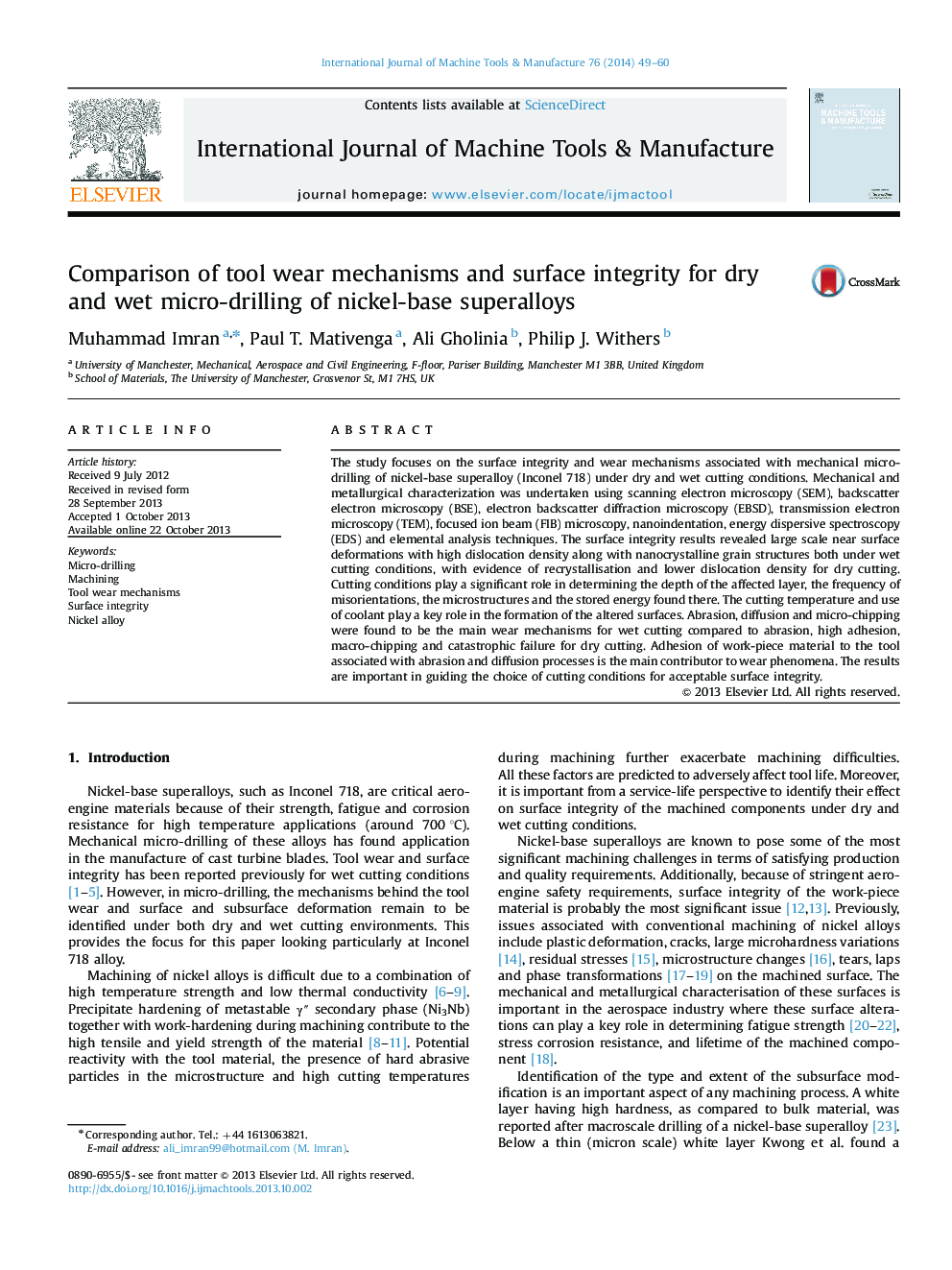| کد مقاله | کد نشریه | سال انتشار | مقاله انگلیسی | نسخه تمام متن |
|---|---|---|---|---|
| 780737 | 1464515 | 2014 | 12 صفحه PDF | دانلود رایگان |

• The research revealed microstructural and mechanical character of white layer in dry and wet cutting conditions.
• The white layer forms under a combination of severe plastic shear deformation and high temperature (and cooling rate).
• Tool wear is attributed to high chip contact length, temperatures, adhesion and diffusion in dry cutting compared to wet cutting.
• Wet drilling revealed progressive tool wear and cutting edge blunting phenomena compared to catastrophic tool failure in dry drilling.
• Adhesion of the coating is the main property that affects the longevity of the coating.
The study focuses on the surface integrity and wear mechanisms associated with mechanical micro-drilling of nickel-base superalloy (Inconel 718) under dry and wet cutting conditions. Mechanical and metallurgical characterization was undertaken using scanning electron microscopy (SEM), backscatter electron microscopy (BSE), electron backscatter diffraction microscopy (EBSD), transmission electron microscopy (TEM), focused ion beam (FIB) microscopy, nanoindentation, energy dispersive spectroscopy (EDS) and elemental analysis techniques. The surface integrity results revealed large scale near surface deformations with high dislocation density along with nanocrystalline grain structures both under wet cutting conditions, with evidence of recrystallisation and lower dislocation density for dry cutting. Cutting conditions play a significant role in determining the depth of the affected layer, the frequency of misorientations, the microstructures and the stored energy found there. The cutting temperature and use of coolant play a key role in the formation of the altered surfaces. Abrasion, diffusion and micro-chipping were found to be the main wear mechanisms for wet cutting compared to abrasion, high adhesion, macro-chipping and catastrophic failure for dry cutting. Adhesion of work-piece material to the tool associated with abrasion and diffusion processes is the main contributor to wear phenomena. The results are important in guiding the choice of cutting conditions for acceptable surface integrity.
Journal: International Journal of Machine Tools and Manufacture - Volume 76, January 2014, Pages 49–60